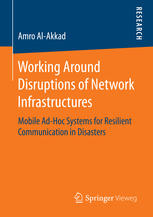

Most ebook files are in PDF format, so you can easily read them using various software such as Foxit Reader or directly on the Google Chrome browser.
Some ebook files are released by publishers in other formats such as .awz, .mobi, .epub, .fb2, etc. You may need to install specific software to read these formats on mobile/PC, such as Calibre.
Please read the tutorial at this link: https://ebookbell.com/faq
We offer FREE conversion to the popular formats you request; however, this may take some time. Therefore, right after payment, please email us, and we will try to provide the service as quickly as possible.
For some exceptional file formats or broken links (if any), please refrain from opening any disputes. Instead, email us first, and we will try to assist within a maximum of 6 hours.
EbookBell Team

4.0
86 reviewsAs in disasters the availability of information and communication technology services can be severely disrupted, the author explores challenges and opportunities to work around such disruptions. He therefore empirically analyzes how people in disasters use remnants of technology to still communicate their needs. Based on this, he suggests quality attributes whose implementation can support the resilience in technology. To exemplify this he develops iteratively two mobile ad-hoc systems and explores their feasibility and implications for emergency response under close-to-real conditions. Compared to the state of the art both systems are independent from preexisting network infrastructure and run on off-the-shelf smartphones.